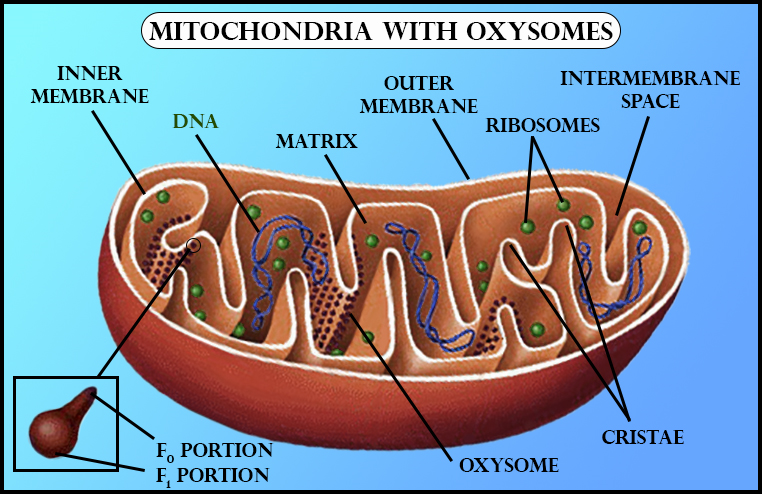
The mitochondrion, often referred to in the plural as mitochondria, is a remarkable and intricate organelle found in most eukaryotic cells. Dubbed the “powerhouse of the cell,” mitochondria are essential for generating the energy needed to fuel cellular activities. Beyond their role in energy production, these tiny structures have a fascinating history and play crucial roles in various cellular processes. In this comprehensive article, we will explore the structure, function, evolution, and significance of mitochondria in the context of cellular biology and human health.
Structure of Mitochondria
Mitochondria are double-membraned organelles with a unique structure that sets them apart from other cellular components. Here is an overview of their key structural features:
1. Outer Membrane
The outer mitochondrial membrane is smooth and surrounds the entire organelle, acting as a protective barrier. It contains numerous proteins involved in various functions, including the transport of molecules in and out of the mitochondria.
2. Inner Membrane
The inner mitochondrial membrane is highly folded into structures called cristae. These cristae provide a large surface area for essential biochemical reactions. Embedded within this membrane are proteins that make up the electron transport chain, a critical component of energy production.
3. Intermembrane Space
The region between the outer and inner mitochondrial membranes is known as the intermembrane space. It contains proteins involved in processes like apoptosis (programmed cell death) and the transport of molecules between the membranes.
4. Matrix
The innermost compartment of the mitochondrion is the matrix. This space contains enzymes responsible for the citric acid cycle (also known as the Krebs cycle) and the oxidation of fatty acids, both of which are crucial for generating adenosine triphosphate (ATP), the cell’s primary energy currency.
Function of Mitochondria
The primary function of mitochondria is to produce ATP through a process called oxidative phosphorylation. This process involves several key steps:
1. Glycolysis
Glucose, obtained from the digestion of carbohydrates, is initially converted into pyruvate through a process called glycolysis in the cytoplasm. This pyruvate is then transported into the mitochondria.
2. Citric Acid Cycle
Pyruvate is further broken down in the matrix of the mitochondria through the citric acid cycle, producing carbon dioxide and high-energy electrons in the process.
3. Electron Transport Chain (ETC)
The high-energy electrons generated in the citric acid cycle are shuttled through a series of protein complexes embedded in the inner mitochondrial membrane, collectively known as the electron transport chain. This transfer of electrons releases energy, which is used to pump protons (hydrogen ions) across the inner mitochondrial membrane into the intermembrane space.
4. ATP Synthesis
The buildup of protons in the intermembrane space creates a proton gradient. This gradient drives protons back into the mitochondrial matrix through an enzyme complex called ATP synthase. As protons flow back, ATP synthase uses the energy generated to convert adenosine diphosphate (ADP) and inorganic phosphate (Pi) into ATP.
Evolutionary Origins of Mitochondria
Mitochondria have their evolutionary origins in a symbiotic relationship between early eukaryotic cells and ancestral prokaryotic cells. This theory, known as the endosymbiotic theory, suggests that mitochondria were once free-living bacteria that were engulfed by a primitive eukaryotic cell. Over time, this symbiotic relationship became mutually beneficial, with the host cell providing protection and nutrients, while the engulfed bacteria provided a significant source of energy through respiration.
Significance of Mitochondria in Health and Disease
Mitochondria are not just the energy producers of the cell; they also play crucial roles in various aspects of cellular health and disease. Here are some key points of significance:
1. Cellular Health
Healthy mitochondrial function is essential for overall cellular health. Dysfunction in mitochondria can lead to a range of diseases and conditions, including mitochondrial myopathies, neurodegenerative diseases, and metabolic disorders.
2. Aging
The gradual accumulation of damage to mitochondrial DNA and proteins is believed to be a contributing factor to the aging process. Some theories of aging propose that the decline in mitochondrial function over time results in reduced energy production and cellular dysfunction.
3. Apoptosis
Mitochondria play a pivotal role in programmed cell death, known as apoptosis. When cells are damaged or no longer needed, mitochondria release pro-apoptotic proteins, initiating the process of cell death.
4. Disease States
Mitochondrial dysfunction is implicated in a range of diseases, including Parkinson’s disease, Alzheimer’s disease, and cardiovascular diseases. It’s also associated with the development of cancer cells, as alterations in mitochondrial function can support the increased energy demands of rapidly dividing cells.
Conclusion
Mitochondria are undeniably fascinating and vital organelles within our cells. Their evolutionary history as symbiotic organisms and their central role in energy production make them key players in the story of life on Earth. Understanding the structure, function, and significance of mitochondria not only provides insights into fundamental biology but also sheds light on the intricate mechanisms that govern our health and well-being. In essence, mitochondria are the unsung heroes powering the complex machinery of life, reminding us that even the tiniest structures can hold the key to understanding the grandest mysteries of biology.



